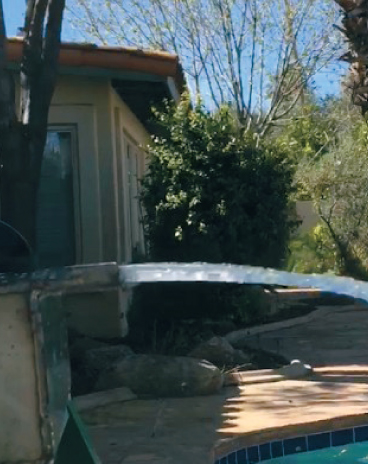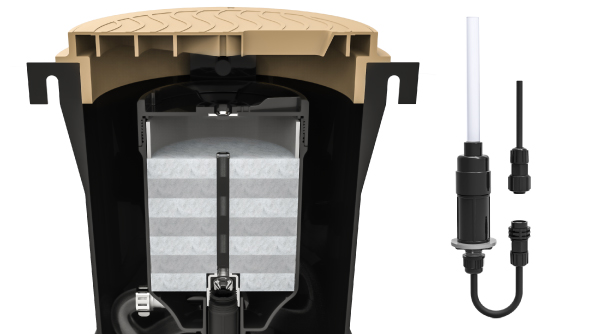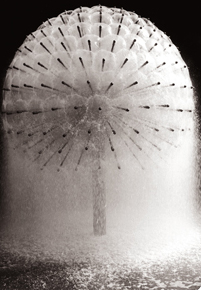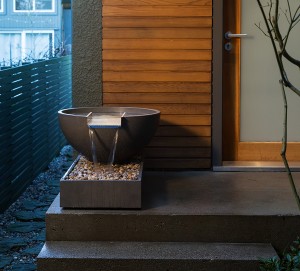fountain design
I've been to New York often through the years, mostly on business trips that have only rarely afforded me opportunities to get out and take in the sights. But on one occasion many years ago, I managed to shake out several extra days and spent my time experiencing as much of Manhattan as I could.
I ranged from Battery Park on the island's southernmost tip of the island up to The Cloisters on its northern reaches and managed to spend a whole, glorious early-fall day in Central Park. It was there, near the upper edge of Frederick Law Olmstead's masterpiece of urban space-making, that I came across a marvelous little fountain that's well worth a few extra steps the next time your travels take you to the Big Apple.
The fountain I'm referring to wasn't here originally. For many years, it had graced the Yonkers, N.Y., estate of Samuel Untermyer, who passed away in 1940. He was a New York lawyer and prominent civic leader, and when his children donated the fountain to the park, the monuments committee placed it by 1947 in an estimable space in the Conservatory Garden.
This is the original fountain. To see it, you need to travel all the way to Mecklenburg, Germany.
The fountain's sculpture, "Three Dancing Maidens" by the German artist Walter Schott, isn't exactly "original" either: It's one of a set of replicas cast in Berlin at some point after the artist finished his work around 1910. Schott was a favorite of Kaiser Wilhelm and spent a lot of time doing monumental portrait busts and conventionally grand statues of historical figures, but he was capable of working with far greater subtlety and expressiveness - these fair and flowing maidens being a case in point.
The fountain freezes from time to time, as seen in this photograph taken in 2008. The frozen drapery adds a special touch to the composition.
I haven't seen the Untermyer Fountain in more than 30 years, but it came quickly back to mind when I saw it among a photo survey of New York fountains frozen by wintertime cold snaps. As you may recall, I'm an avid fan of frozen fountains and waterfalls; I've always supposed it has something to do with the fact that my family escaped the Frost Belt when I was very young -- but I still have early (and happy) memories of icicles draping everything in sight.
You don't have to withstand frosty weather to appreciate the Untermyer Fountain: I saw it on a warm October day, and I have to say there's no better place to be than New York (and Central Park!) at that time of year.
By Jim McCloskey
I've been to New York many times through the years, mostly on business trips that have only rarely afforded me opportunities to get out and about and take in the sights. But on one occasion many years ago, I managed to shake out several extra days and spent my time experiencing as much of Manhattan as I could.
I covered the run from the southernmost tip of the island up to The Cloisters on its northern reaches and managed to spend the full length of one glorious early-fall day in Central Park. It was there, near the top edge of Frederick Law Olmstead's masterpiece of urban space-making, that I came across a marvelous little fountain that's well worth a few extra steps the next time your travels take you to the Big Apple.
The fountain I'm referring to wasn't here originally. For many years, it had graced the Yonkers, N.Y., estate of Samuel Untermyer, who passed away in 1940. He was a New York lawyer and prominent civic leader, and when his children donated the fountain to the park, the monuments committee placed it by 1947 in an estimable space in the Conservatory Garden.
The fountain's sculpture, "Three Dancing Maidens" by the German artist Walter Schott, isn't exactly "original" either: It's one of a set of replicas cast in Berlin at some point after the artist finished his work around 1910. Schott was a favorite of Kaiser Wilhelm and spent a lot of time doing monumental portrait busts and conventionally grand statues of historical figures, but he was capable of working with far greater subtlety and expressiveness - these fair and flowing maidens being a case in point.
I haven't seen the Untermyer Fountain in more than 30 years, but it came quickly back to mind when I saw it among a photo survey of New York fountains frozen by wintertime cold snaps. As you may recall, I'm an avid fan of frozen fountains and waterfalls; I've always supposed it has something to do with the fact that my family escaped the Frost Belt when I was less than four years old and I have early (and happy) memories of icicles draping everything in sight.
But you don't have to withstand frosty weather to appreciate the Untermyer Fountain: I saw it on a warm October day, and I have to say there's no better place to be than New York (and Central Park!) at that time of year.
dry
© Victorianl | Dreamstime.com
Original fountain in Mecklenburg, Germany
Photo by Doris Antony, Berlin | Wikipedia
Frozen in 2008
Photo by Ralph Hockens, New York | Wikipedia
Bobé Water & Fire Features (Phoenix, AZ) now offers Pure Flow, a scupper made with…
Custom Molded Products (Tyrone, GA) has launched a laminar jet system featuring advanced LED lighting,…
Whenever I visit the area with any time to myself, I enjoy visiting the Art Institute of Chicago. Not only does the museum host a collection of artwork expansive enough to include Renaissance masters as well as cutting-edge Modernists, but it also has what may be the best museum shop I've ever encountered.
It'd be well worth the visit even if it didn't also have a wonderful waterfeature - the Fountain of the Great Lakes - on its west side.
I'm a sucker for fountains that make me think not only about how they work but also what they mean, and in this case the interpretation of the way the Great Lakes flow and interrelate leads to a few moments of interested reflection. It's not exactly literal, nor is it very complicated: It's just a charming an allegorical representation of five vast, interconnected lakes that contain more than a fifth of the world's fresh water.
I find it amusing that the fountain was controversial in its day. Some were upset because the imagery wasn't quite literal enough. Sure, if you're visualizing a map of the lakes it's a bit difficult to read the relationships of the five figures as a clear representation of the system, but that seems trivial.
And then there were objections because there's a certain amount of metallic breast on display; that, too, seems trivial in such a classical set of forms. (You have to wonder if, back in 1913, those same prudes ran around putting their version of sticky-notes all over any Rubens painting the museum might have been fortunate enough to acquire or borrow.)
Personally, my only complaint is that the fountain isn't where it was originally placed: In 1963, it was moved from a venue of much greater prominence to its current spot adjacent to what was then a new wing that had been added to the museum complex. The positioning isn't terrible, but I don't like the reflecting pool/fountain that now shoots jets of water up into the space: The big sculpture works better on its own!
As defects go, however, that's an easy one to ignore. So when you visit the Art Institute and its great museum shop, take a few extra steps and visit a wonderful fountain that tells a nice little story about the region and its heritage.
Fountain People (San Marcos, TX) manufacture Dandelion water effects in both spherical and hemispherical configurations.…
Solus Décor (Vancouver, British Columbia, Canada) has added water bowls to its product lines. The…
I started out on the construction side of the pool industry nearly 20 years ago. Back then, I probably experienced the building process a good 500 times, picking up insights into what determined the level of success of each project. As time passed, I found myself being drawn to the design side: I saw it as a way to put all of those insights to good use; more important, I knew it was where I could do the most good for homeowners. In making the transition, I



















